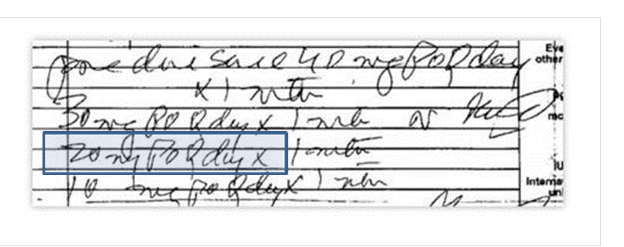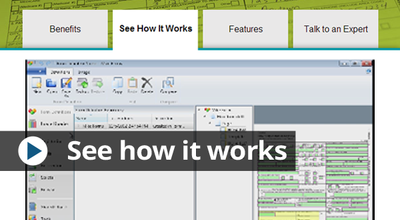I recently sat-in on a great HIMMS webinar called “Extending Your EMR with Business Intelligence Solutions” that has a lot of great examples of how analytics can be applied to health information stored within electronic medical and health records.
Just as I was about to question where scanned or handwritten information played in this healthcare “revolution” a participant speaker from Microsoft brought up a UK-based company that took and synthesized a variety of health-related information including “one of the most overlooked health data types in healthcare today – physicians notes” as a key ingredient in their offering.

Automate detection and extraction of prescriptive data.

Locate and extract disease-related information.
The particular application discussed was referred to as a “symptomatic surveillance system” that was created and rolled-out across the UK to monitor outbreaks and other potential health threats – essentially an early warning system.
While electronic medical records contain a lot of data, these systems can lack real “on the ground” information that is “trapped” in notes that never make it into the larger data analysis, representing a serious gap. By adding notes into the mix, the system can monitor presence of specific symptoms that could reflect something serious and then aggregate this data into more meaningful and useful reporting.
There are a lot of potential uses for medical information that is recorded in note format that, if identified and extracted, can be a major source of not only cost savings and efficiencies but added intelligence. Take for instance the following examples:
- The insurance company that needs to quickly categorize and identify applicants by medications taken or disease states
- The healthcare provider that wishes to aggregate symptomatic, diagnostic, and prescriptive information in order to support emerging accountable care and meaningful use policies
- The pharmacy or pharmacy benefits management company that needs to streamline the evaluation and authentication of prescriptions and patient information
All of the above involve the need for someone or something to quickly identify key handwritten information and then use this information within a business process. The good news? That technology is available right now.
Parascript is currently working with large private and public organizations to add more intelligence to their business processes and “big data” programs by enabling location and extraction of any data inclusive of information in handwritten form.




